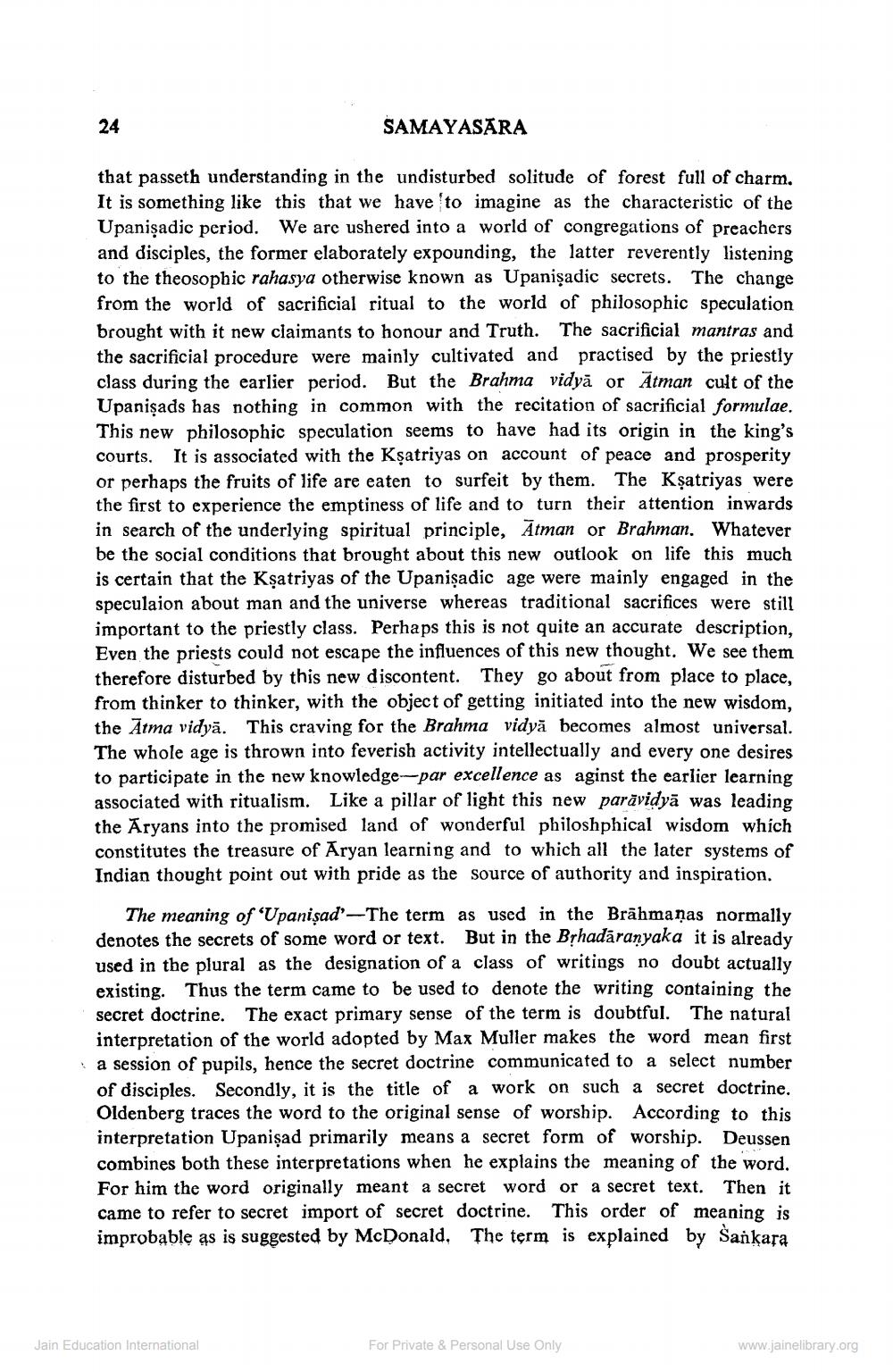________________
24
SAMAYASARA
that passeth understanding in the undisturbed solitude of forest full of charm. It is something like this that we have to imagine as the characteristic of the Upanişadic period. We are ushered into a world of congregations of preachers and disciples, the former elaborately expounding, the latter reverently listening to the theosophic rahasya otherwise known as Upanişadic secrets. The change from the world of sacrificial ritual to the world of philosophic speculation brought with it new claimants to honour and Truth. The sacrificial mantras and the sacrificial procedure were mainly cultivated and practised by the priestly class during the earlier period. But the Brahma vidyā or Atman cult of the Upanişads has nothing in common with the recitation of sacrificial formulae. This new philosophic speculation seems to have had its origin in the king's courts. It is associated with the Kșatriyas on account of peace and prosperity or perhaps the fruits of life are eaten to surfeit by them. The Kşatriyas were the first to experience the emptiness of life and to turn their attention inwards in search of the underlying spiritual principle, Atman or Brahman. Whatever be the social conditions that brought about this new outlook on life this much is certain that the Ksatriyas of the Upanişadic age were mainly engaged in the speculaion about man and the universe whereas traditional sacrifices were still important to the priestly class. Perhaps this is not quite an accurate description, Even the priests could not escape the influences of this new thought. We see them therefore disturbed by this new discontent. They go about from place to place, from thinker to thinker, with the object of getting initiated into the new wisdom, the Ātma vidyā. This craving for the Brahma vidyā becomes almost universal. The whole age is thrown into feverish activity intellectually and every one desires to participate in the new knowledge-par excellence as aginst the earlier learning associated with ritualism. Like a pillar of light this new parāvidyā was leading the Aryans into the promised land of wonderful philoshphical wisdom which constitutes the treasure of Aryan learning and to which all the later systems of Indian thought point out with pride as the source of authority and inspiration.
The meaning of 'Upanisad'-The term as used in the Brāhmaṇas normally denotes the secrets of some word or text. But in the Byhadaranyaka it is already used in the plural as the designation of a class of writings no doubt actually existing. Thus the term came to be used to denote the writing containing the secret doctrine. The exact primary sense of the term is doubtful. The natural interpretation of the world adopted by Max Muller makes the word mean first a session of pupils, hence the secret doctrine communicated to a select number of disciples. Secondly, it is the title of a work on such a secret doctrine. Oldenberg traces the word to the original sense of worship. According to this interpretation Upanişad primarily means a secret form of worship. Deussen combines both these interpretations when he explains the meaning of the word. For him the word originally meant a secret word or a secret text. Then it came to refer to secret import of secret doctrine. This order of meaning is improbable as is suggested by McDonald, The term is explained by Sankara
Jain Education International
For Private & Personal Use Only
www.jainelibrary.org




